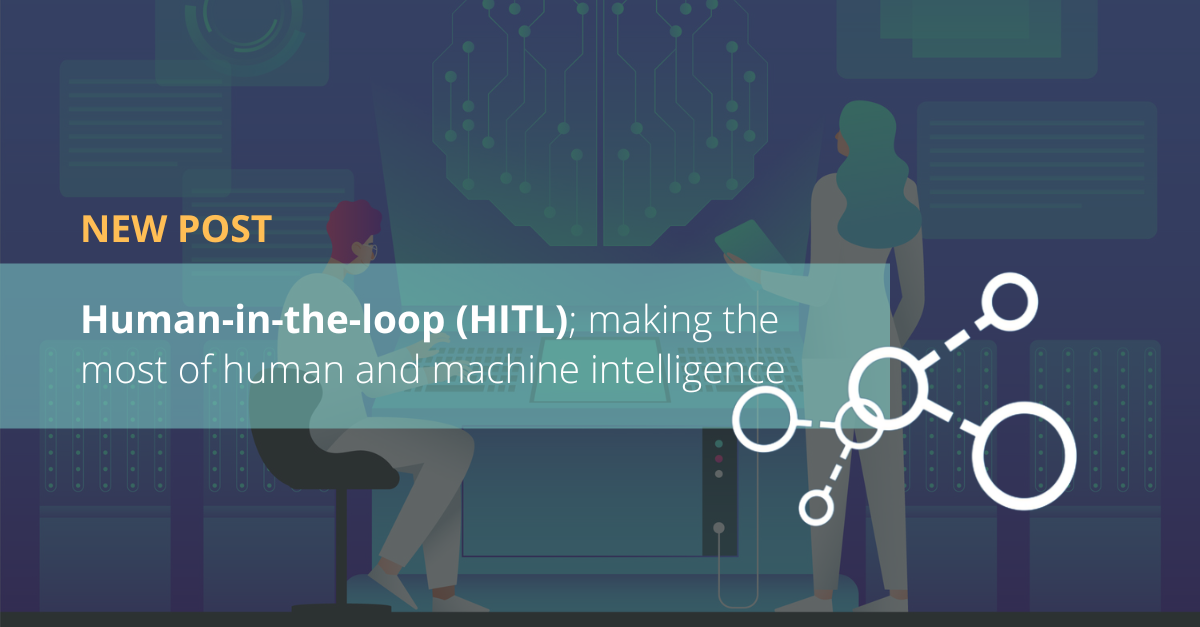Machine translation (MT) has taken a technological turn with the incorporation of artificial intelligence. It uses a neural system that simulates human translations through machine learning.
By doing so, several shortcomings of machine translation have been solved, and more so with natural language processing (NLP).
However, the problem is not completely solved. In fact, machine learning in NLP continues to underperform compared to that of humans.
With this in mind, human supervision is still necessary to obtain the highest quality in neural machine translation processes. And one of the best forms of human-machine collaboration is the human-in-the-loop (HITL) model.
What is HITL (human-in-the-loop)?
Human-in-the-loop is a methodology or process used by artificial intelligence for the creation of machine learning based on continuous improvement.
The model is based on marrying machine capability with human intelligence, through interactions that help to feed back into the automated learning model.
In other words, human-in-the-loop is about human intelligence intervening when a machine has difficulty solving a problem. In this situation, the person adjusts and supplies the initial data feed to the learning algorithm.
With this systematic feedback, the algorithm will improve its predictions and decision-making. Consequently, the results will get better and better.
When to use human-in-the-loop machine learning?
Human-in-the-loop is a looping model, which relies on constant feedback so that the algorithm has new tools when performing its work. Examples of these algorithms include document translation models and text classifiers, algorithms for retrieving and searching for information, etc.
In each specific case, a sufficiently large set of (initial) training data must be created to then test and adjust the model with human intelligence. This way the algorithm will make more accurate decisions.
Accordingly, human-machine interaction, with the human-in-the-loop machine learning approach, is employed in two phases:
-
In the training phase. A human generates the initial data on which the algorithm will be based to solve the problems.
-
In the adjustment and testing phase. A human intervenes to continuously improve the accuracy of the algorithm and to correct any erroneous predictions made by the system. In a cyclic system:
-
1st Adjust the data.
-
2nd Test the system for improved accuracy.
Interesting content:
How to boost your business with natural language processing (NLP)
Human-in-the-loop: combining humans and machines to create AI (artificial intelligence)
Artificial intelligence algorithms are based on statistics for problem-solving. So their reliability is not 100%.
This lack of certainty in artificial intelligence, also called algorithmic uncertainty, requires direct interaction with humans. This is the best way to create continuous and relevant learning that improves translation quality.
The feedback that humans provide the AI with gives the translation algorithms an increased ability to adapt to the logical thinking of people and to reason, act and translate texts reliably.
Within this approach, human-in-the-loop and AI seek to combine the great potential of the machine and human intelligence: decision-making based on a dataset and human logic that is unbeatable.
And the greater this interaction, the fewer errors from the AI algorithm. A working example of it is our 2024 Deep Adaptive AI Translation for human-fluency machine translation, which makes use of RAG (vector databases) and user-defined preferences to guide culturally adapted translation for global communications.
Characteristics that a well-designed HITL system should include
In the context of machine translation, a well-designed human-in-the-loop system should have features such as the following:
-
A large amount of quality initial data. This data must be monitored by humans for constant improvement.
-
Continuous human feedback, with time intervals of minutes, hours, days, or weeks. This improves the understanding and response of the MT system.
-
Fast corrective feedback, so that the impact can be observed in real-time.
-
Active collaboration between translators and the machine translation research and development department. This allows translation problems to be addressed.
-
Evaluation based on human review and comments. The metrics of automated systems are left to their own findings.
-
Collaboration through the creation of various feedback points.
One of the best ways to implement a well-designed human-in-the-loop machine learning system is to encourage translators to use automation to increase productivity and competitiveness.
This achieves human interaction with the system and, consequently, continuous improvement of the algorithms to reach maximum quality in the translations.
Recommended reading:
Get advice from HITL experts
At Pangeanic, we specialize in artificial intelligence applied to technical and specialized translation services.
We are experts in the human-in-the-loop feedback model, the continuous interaction between our machine translation system and our translation professionals. Our goal is always to provide the highest quality and reliability in translations of documents, websites, and online stores.
Pangeanic will advise you on the translation services that really fit your company's needs.




